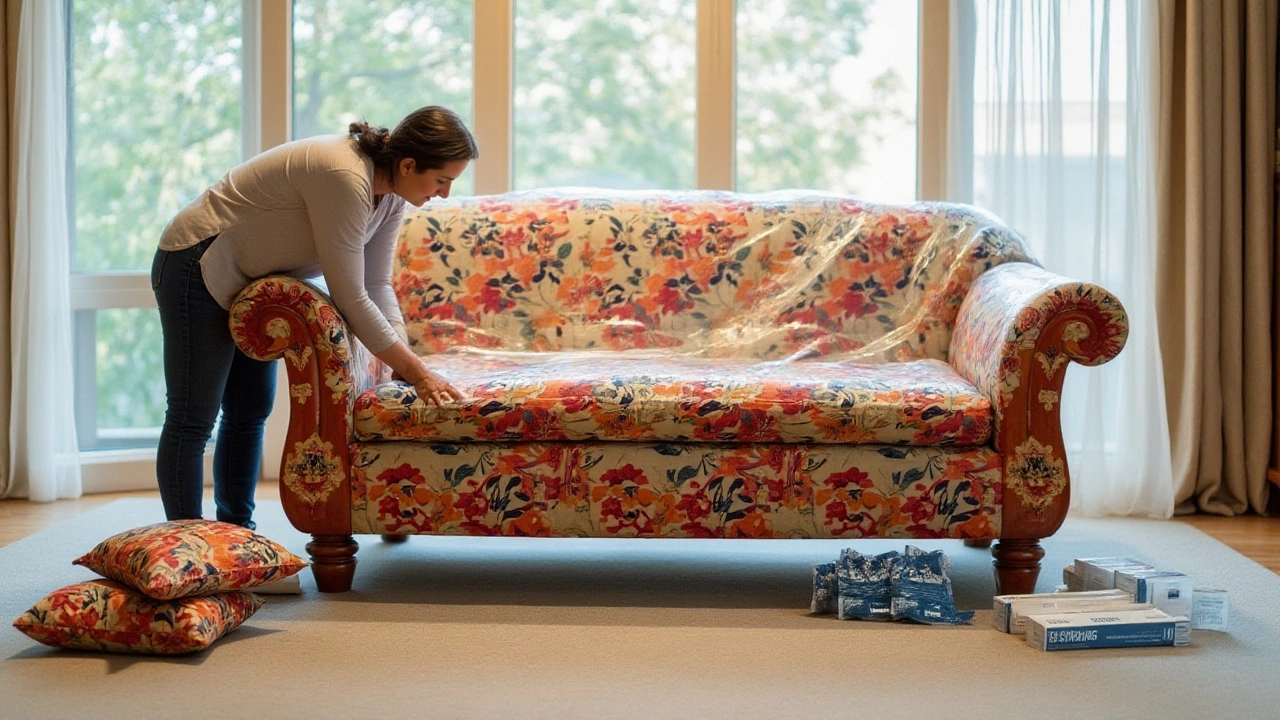Covering Techniques for Sofas – Simple Ways to Protect Your Couch
Got a favorite couch you want to keep looking fresh? Covering it is the fastest hack. A good cover stops spills, hides pet hair, and adds a style boost without buying a new sofa. Below are practical ways to cover your sofa, whether you’re on a budget or want a custom look.
Everyday Covers You Can Buy
Ready-made slipcovers are the easiest option. Stores sell them in neutral colors, stretchy fabrics, and patterns that fit most standard sofas. Pick a material that matches your lifestyle: polyester works for families with kids, while cotton feels softer for a cozy vibe. Measure the width, depth, and height of your couch, then choose a size that’s a little larger than those numbers. This extra room lets the cover slip on easily and stay in place.
DIY Cover Ideas You Can Try at Home
If you want a personal touch, make your own cover. Grab a sheet, a fitted pillowcase, or a plain tablecloth. Cut the fabric to match the back, seat, and arms of the sofa. Sew simple seams or use fabric glue for a no‑sew version. Adding elastic bands to the corners helps keep the cover snug. You can also repurpose a large scarf as a decorative throw that doubles as a protector for the armrests.
For pet owners, choose a cover that’s easy to wash. Throw the cover in the washing machine once a week to get rid of fur and odors. Adding a layer of waterproof fabric underneath protects the cushion from accidents. Many DIY tutorials suggest gluing a thin vinyl sheet to the underside of the cover – it doesn’t add much bulk but saves the sofa from liquid damage.
When you have kids, think about spill‑proof fabrics. Microfiber or polyester blends resist stains and can be wiped clean with a damp cloth. Keep a small spray bottle of mild detergent nearby for quick clean‑ups. The goal is to make cleaning so simple that you’ll actually do it.
Another trick is to use a slipcover that’s reversible. One side can be a bright pattern for a pop of color, while the other side stays neutral for everyday use. This gives you two looks with one cover and extends the life of the fabric.
If you’re short on time, pull a large blanket over the couch when you’re not using it. Secure the blanket with rubber bands or velcro strips tucked under the cushions. This method works well for seasonal changes – swap a light blanket in summer for a warm throw in winter.
Finally, protect the legs of your sofa. Small rubber pads or felt grommets prevent scratches on wooden floors. They’re cheap, stick on easily, and keep the furniture stable.
Covering your sofa doesn’t have to be a big project. Choose a ready-made slipcover for instant protection, or get creative with DIY fabrics for a custom feel. Keep the cover washable, protect against pets, and add a few simple accessories to make your couch last longer and look better every day.
Effective Techniques to Cover a Sofa for Storage
Storing a sofa requires more than just tucking it away in a corner. Ensuring its protection involves choosing the right materials, prepping the sofa correctly, and controlling its environment. Learn how to safeguard your sofa from dust, moisture, and pests during storage with expert tips and techniques. From selecting covers to optimizing storage space, discover practical methods to keep your sofa in top condition for future use.





